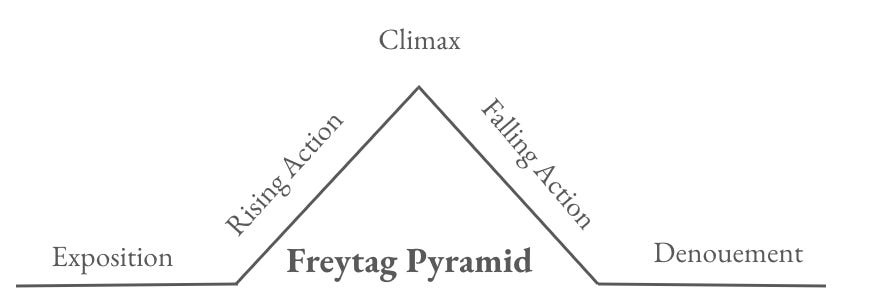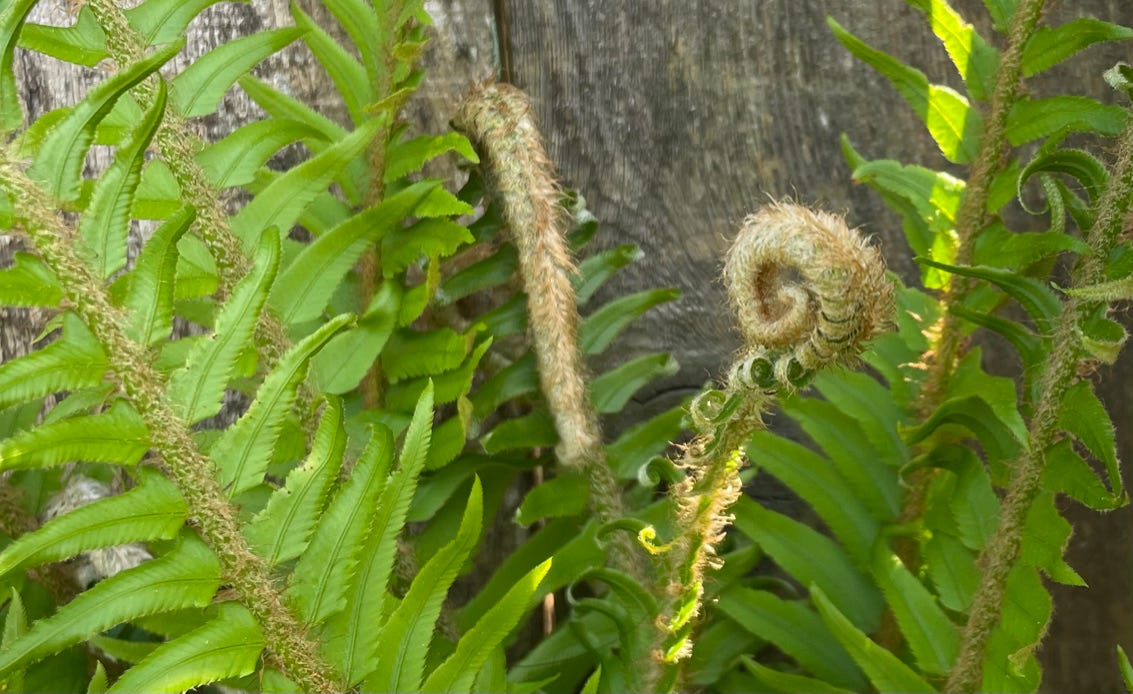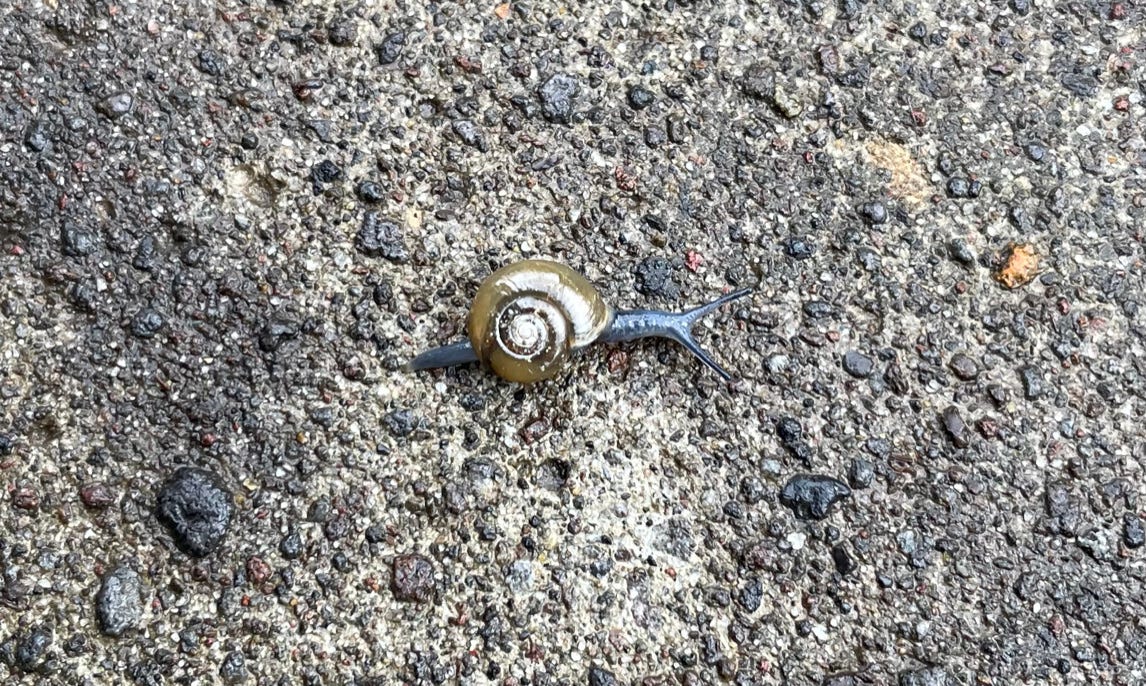The maples are seeding, sending their little whirligigs into a spiraling fall. If you catch them before they touch ground, my mom taught me, you can hold them and make a wish before releasing them back to the air.
May has always been my mom’s month. It’s Mother’s Day, of course, but also her birthday. She died in fall, but it's in this particular moment of spring each year that I find myself most thinking of her. For me, this is a month of beginnings that hold endings furled up inside them.
Last May was bright and generative, full of travel and friendships and new love. It was also when I began the medical process that would result in a breast cancer diagnosis and a significant amount of breaking come winter. This May, post surgery and with the most intensive parts of cancer treatment (hopefully) behind me, I’m still shaky and shaken, likely fine, I think, but still undergoing difficult treatments to prevent recurrence and manage longer term side effects. There’s enough of a pause, enough of a calm, to ruminate in.
So I think over the past year since my diagnosis began. I look at pictures of myself from before, from during, from the hospital. I consider my hair. I consider my scars. I consider how my relationships changed or couldn’t change, how some people can so beautifully hold the sharp contradictions of another’s liminality and some can’t. I consider the parts of myself that I’ve lost. I retread my memories. I reread the poems I spent the past year writing. I write them again and again. I reorder them and throw them away and pick them back up and rewrite and reorder them again. I keep doing it until they hold together, curled so tightly in on themselves they can’t be pulled apart.
It struck me the other day that the circuitous emotional experience I seem to be in isn’t a circle at all, but a spiral. It’s a deepening that seems like repetition. It’s grief—and it’s growing something.
We don’t often like recursion in our narratives or our lives. We don’t like to linger too long in the liminal. We don’t want to feel stuck in a feeling. If some aspect of a relationship isn’t working, we so often feel the pressure to decisively fix it or end it. After a break up, we’re supposed to get over it. No one wants to spend months repeating the same conversation. But feeling through things takes time. It takes energy. It takes focus. Just like writing does. Grieving friends consistently tell me that they feel like everyone is getting sick of them and their sadness, that they are simply expected to get over it already. But my mom died nine years ago and I’m still grieving her. Not in the same ways, but I know by now that I will always carry that grief with me. That isn’t a bad thing. Grief can blossom beautifully. Grief bears the most uncanny fruits if you let it.
Cancer can feel like that. The narratives we tend toward around cancer are about fighting it and winning (or losing). We want those straight linear arcs. They help us avoid the pain of it, the confusion, the perpetual in-between of the experience. But what if we weren’t afraid of uncertainty or pain or the circuitous natures of grief?
It so often worries us to hear about how an experience lingers. I’m in the phase of treatment now where I seem mostly fine to those who don’t know all the details of my medical plan, where people begin to throw around terms like “remission” and “cancer free” and become confused when I can’t straightforwardly affirm them. I’ve done the surgery and my hair is growing back. So I beat it, right? Did I win?
My doctors avoid all such language. They know too much to think of a medical experience as a battle or even a linear arc. In fact, most experiences, in my experience, don’t fit such an arc. And yet, when we write stories, we’re taught to shape them like this:
But I’m not sure I’ve ever had an experience that could fit in this diagram that so many teachers use to teach us what a narrative is.
I have so much to say about our conventions around narrative structure, as do a lot of other writers, so I’m going to dedicate the next few newsletters to that subject.
But, for now, I’m going to suggest an alternative. What if we made narratives that looked like this:
Or this:
Or this:
What if we embraced circuitousness, leaned into rumination, allowed for deepening repetition, and wrote in spirals?
A Spell for Spiraling
Take something you’ve already written that feels like it has excess words or thoughts or just too much looseness to the writing, something that doesn’t feel quite focused enough yet. Go through it and highlight the parts that feel most urgent or interesting or resonant. These might be lines, words, images, ideas. Take all these out (write them in a list or copy them into another document). Use these as your writing prompt. Incorporate all of them into a new piece. Let the piece transform as much as it needs to. It doesn’t even have to be about the same thing (though it certainly can be). Now do it again. Highlight all the most resonant parts of this new piece and take them out and write with them. Now do it again. Keep going until the piece that you have feels as sharp and tightly wound as it can be. Then look at the first piece you started with. Perhaps you can read it differently now. Perhaps it’s clearer where unnecessary parts need to be cut or refined or where parts need more attention to feel full. If you have ideas for editing or rewriting it, great, do that. If you find that you like one or more of the pieces that you wrote through this exercise, great, keep working with those. You can keep going over the pieces that feel most resonant again and again to see what grows out of them. You can take as long as you need.
Roots
Meander, Spiral, Explode: Design and Pattern in Narrative by Jane Alison describes narrative shapes from the natural world and has been one of my go to books on structure for awhile now.
Happenings
My debut novel, Leafskin, is being published with Stillhouse Press next spring. I turned in my edits earlier this month and the forthcomingness of it all is actually beginning to feel real. As I wrote the novel, I thought of its shape as similar to that of a fern frond unfurling. That spiraling form of the curled frond but also the motion of its growth, the reaching feeling of release, and the final expansion when all the little connected leaflets open. As I wrote it, the novel kept surprising me, moving past the ending I thought it would have and entering spaces I hadn’t charted. It absolutely refused to be pyramid shaped. I’ll write more about the novel and the publication process in future newsletters, but for now, I’ll spiral back and end where this newsletter began and say I wish I could have handed my mom a copy of my first book. I know it would have made her very happy to hold it.
Until the next one,
Miranda









